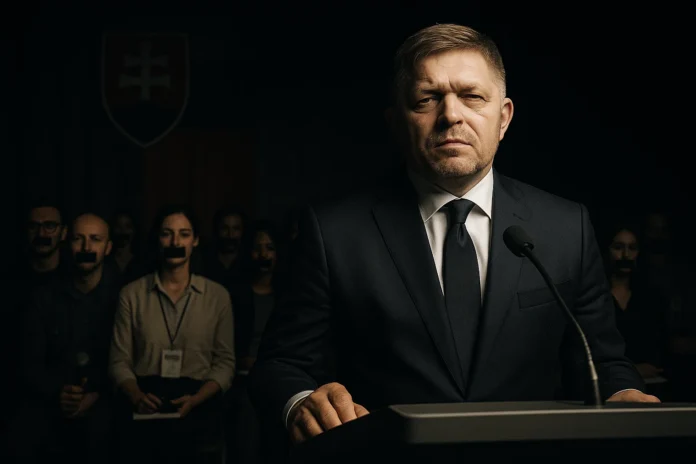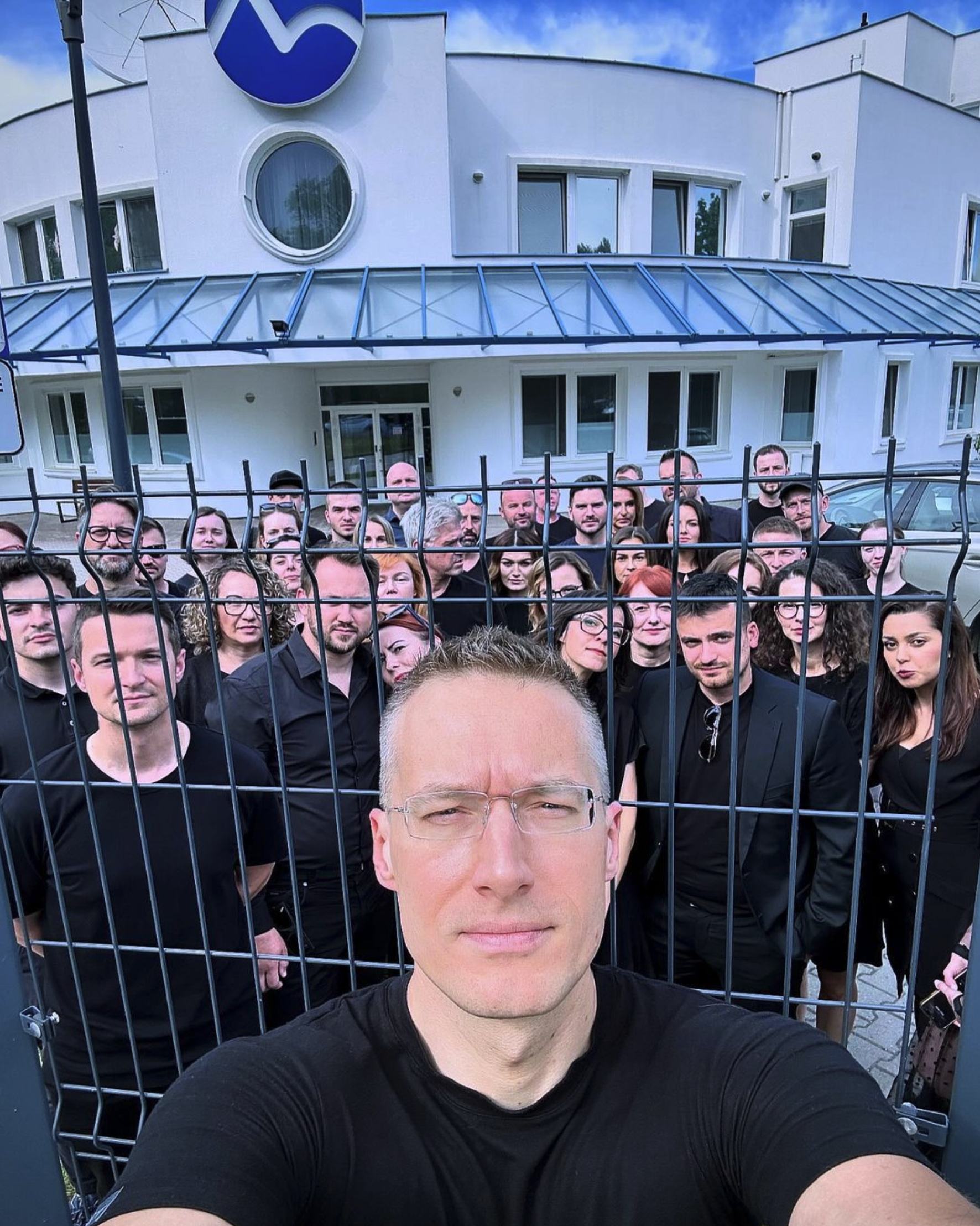Slovakia’s media landscape is facing its most acute crisis since the country’s democratisation, as the government of Prime Minister Robert Fico intensifies efforts to dismantle institutional safeguards protecting press freedom. In its 2025 World Press Freedom Index, the international watchdog Reporters Without Borders (RSF) ranked Slovakia 38th globally—a historic low attributed to direct state interference in Slovakia’s public broadcaster, Slovenská televízia a rozhlas (STVR), expanding oligarchic control of private media, and a deepening collapse of financial sustainability for independent journalism. Fico’s administration has sought to defund and politically subordinate STVR, while structural vulnerabilities—such as the media market’s domination by Penta, a Slovak financial conglomerate with major stakes in domestic media—and the near-total absence of transparent state support have left newsrooms increasingly defenceless.
The crisis is compounded by the disruptive influence of global digital platforms that have diverted ad revenues, amplified disinformation, and marginalised professional journalism. As legal protections under the forthcoming European Media Freedom Act remain months away from full enforcement, Slovak journalists are turning to fragile crowdfunding models to sustain editorial independence. The convergence of domestic political hostility, structural economic decay, and foreign technological disruption has created an existential threat to Slovakia’s democratic information environment, raising alarm across the European Union.
Slovakia is undergoing a sharp and deliberate erosion of press freedom. According to the 2025 World Press Freedom Index, published by the international watchdog Reporters Without Borders (RSF), Slovakia now ranks 38th globally—a dramatic fall marking its worst position in fifteen years. This decline is not coincidental. It reflects a coordinated campaign against media independence led by the country’s political leadership and compounded by systemic vulnerabilities in the Slovak media landscape.
Turning the State Broadcaster into a Government Mouthpiece
At the centre of the crisis stands Prime Minister Robert Fico, a long-time political figure who returned to power in 2023. His government has been accused of using state institutions to undermine the public broadcaster, Slovenská televízia a rozhlas (STVR), by pushing for cuts to its funding and seeking to exert direct political control over its editorial direction. According to Pavol Szalai, head of the EU and Balkans desk at RSF, these efforts form part of a broader strategy to “corner” public media and bring it into alignment with the ruling coalition’s agenda.
The situation in the private media sector is equally troubling. A large portion of Slovakia’s commercial news outlets are owned by the financial conglomerate Penta. Though legally permitted, such concentration of ownership poses clear threats to editorial independence. Penta, according to RSF, shows little interest in fostering pluralistic or critical journalism. This oligarchic influence stifles the diversity of voices in the Slovak public sphere and leaves critical reporting dangerously exposed to internal pressure or commercial retaliation.
When the Newsroom Belongs to the Oligarch
Behind these developments lies a deepening economic crisis for independent journalism. Slovak media, like many of their counterparts across Europe, are grappling with shrinking revenues and unstable financial footing. The economic model sustaining independent outlets is rapidly collapsing. Advertising income, once the lifeblood of media operations, has become increasingly scarce. Many journalists now face precarious working conditions, undermining their ability to hold power to account.
Compounding the problem is the near-complete absence of transparent and sufficient state support. Public funding mechanisms that could help ensure the survival of pluralistic journalism are either unavailable, non-transparent, or deliberately neglected. In such an environment, media outlets are often left with a stark choice: compromise their editorial independence or risk financial ruin. According to RSF editorial director Anne Bocandé, “media are being forced to choose between independence and survival.”
Against this bleak backdrop, some Slovak journalists have turned to crowdfunding as a lifeline. Publicly funded initiatives such as the independent news platform 360tka have emerged in recent years, demonstrating both the demand for reliable reporting and the failure of institutional mechanisms to support it. While important, these grassroots efforts remain fragile and insufficient as a systemic solution.
Europe’s Last Legal Line of Defence
Legal structures within Slovakia and the European Union offer a partial bulwark against political interference. Szalai notes that domestic courts and European legislation currently represent some of the few remaining constraints on government overreach. Their role is expected to grow with the upcoming enforcement of the European Media Freedom Act, which enters full effect in August 2025. The Act aims to guarantee editorial independence and transparency of media ownership across the EU, offering hope for Slovak media if properly implemented and enforced.
Yet the threats do not come only from within. Slovakia’s media ecosystem is under pressure from powerful global technology corporations that have disrupted traditional journalism everywhere. Dominant platforms such as Google, Facebook, and Apple have absorbed most digital advertising revenue, stripping Slovak outlets of crucial income. These platforms not only displace professional journalism in the digital space but also amplify disinformation and sensational content, distorting public discourse and weakening trust in credible news sources.
This convergence of domestic political hostility, economic fragility, and foreign technological disruption places Slovakia’s media in an existential bind. The fight for journalistic survival is no longer abstract—it is happening in real time, with consequences for democracy, rule of law, and public trust. The Slovak case serves as a warning: when independent media are financially starved, politically targeted, and digitally marginalised, democracy itself is at risk.








